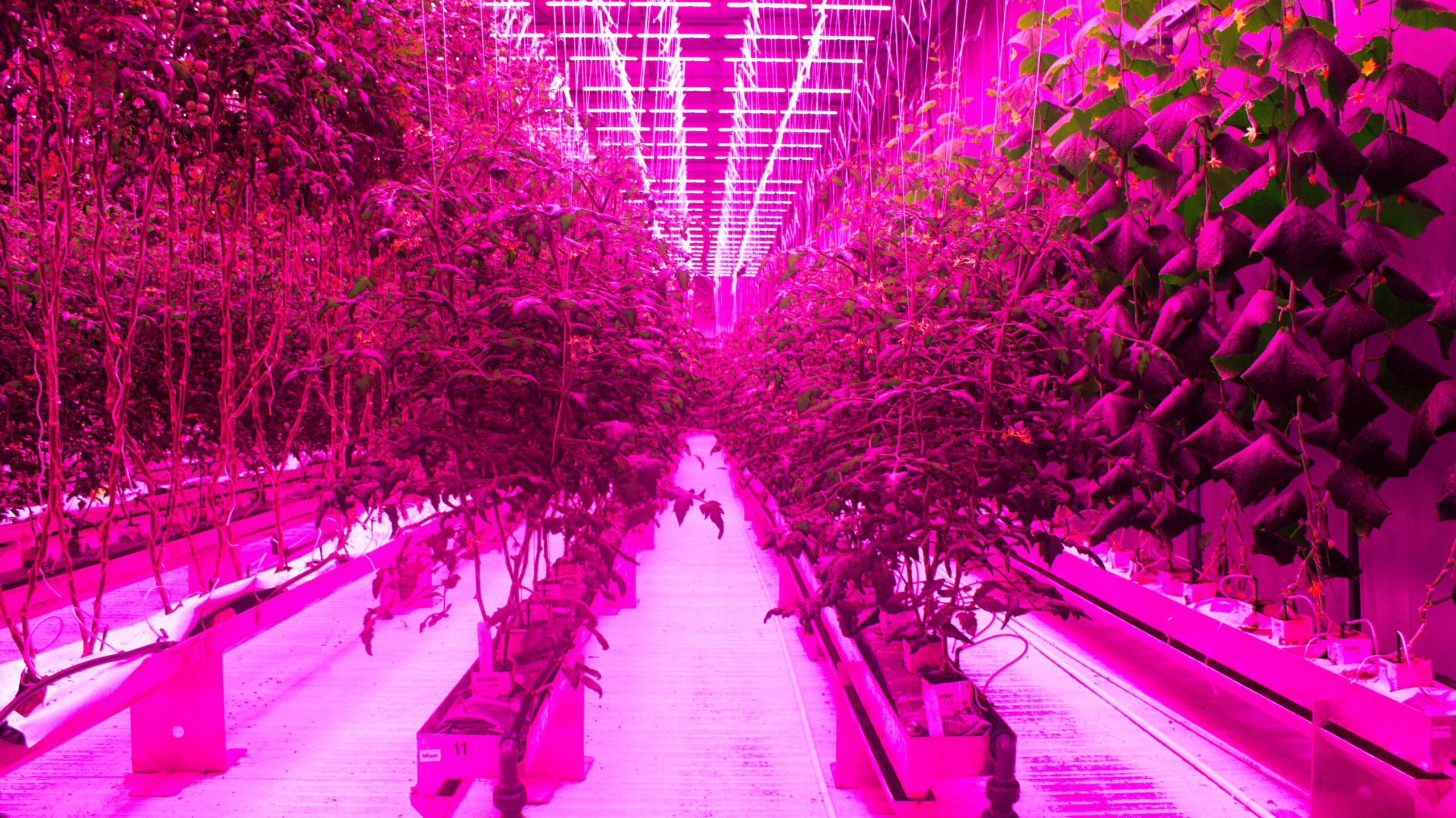‘Robotic agriculture’ is using drones, data, AI and automation to solve our most urgent global challenge: How to feed the world without destroying it
From seed to harvest, everything produced by “80 Acres Farms” is grown indoors in a fully automated and controlled environment. This futuristic vertical farm is located in Ohio—a region synonymous with rural America—and is part of a booming community of ‘pinkhouses’ powered by robotics, Artificial Intelligence and data-collecting sensors that leave nothing to chance. This hyper-efficient system allows greens to be grown year-round with remarkable precision. All aspects of the farming process are monitored, analysed and optimised, allowing plants to grow hydroponically without soil, sun, pesticides—and perhaps most impressively—with 97% less water. Even the farm’s namesake is a nod to its objective of producing more with less space (or the equivalent of 80 acres of earth.)
Of course these enhancements to agriculture go far beyond futuristic-style farms. With agriculture-tech in its infancy in many places, the development and real-world use cases are evolving rapidly and with high anticipation. From strawberry-picking robots to satellites collecting data on soil and crop health, these advancements revolve around a familiar premise: What if technology worked in harmony with nature to make better use of our resources? As arable lands continue to shrink and water more precious than ever, the sense of urgency is real. With almost 3 billion more mouths to feed by 2050, a convergence of these technologies may enable the innovations needed to sustain a ballooning population with increasing demands.
Agriculture Goes Digital
It makes sense that the technologies enhancing our traditional growing methods have become more appealing. The very nature of farming is tied to unpredictability, and these enhancements are disrupting all facets of modern-day agriculture. Automation that acts intelligently; robots that manage the heavy lifting; data-collecting drones; GPS satellites directing driverless tractors; sensors that communicate in real-time—we’re only beginning to see how unmanned tech, data and robotics may someday improve our entire food supply chain.
While these technologies excite the imagination, agriculture itself has been evolving over 12,000 years. Indeed throughout history, our ability to produce food abundantly gave birth to civilisations and decided the fortunes of empires. Just as our hunter-gatherer ancestors observed the life cycle of a seedling and learned to sew—and as the industrial revolution ushered in motorised machinery—the digital transformation of agriculture now emerging is being powered by big data, high-speed connectivity, and the near limitless possibilities for the leading Internet of Things (IoT). These digital ecosystems are helping modern farms run more efficiently and with greater predictability. Using precision technologies, farmers can better protect their crops, increase yields and ultimately make better use of precious resources and other inputs.
Rise of the Machines
There exists a truth now that will also be true tomorrow: The proliferation of strong and reliable connectivity will be the key to opening all doors. Roughly 3.4 billion people, or 45% of the world’s population, live in rural areas, many of which are underserved by mobile network operators (MNO’s). Creating the necessary infrastructure to supports the IoT becomes priority one, two and three. For example, in areas of the world where connectivity is limited, unreliable or non-existent, enablers like Cubic Telecom are delivering digital access directly to the fields, opening up opportunities across farm management systems.
Then there’s a project dubbed “Hands Free Hectare” out of the UK. At a glance, this outdoor farm exhibits nothing out of the ordinary—except that it’s completely autonomous. In fact, researchers managed to grow and harvest a crop of cereals without a human ever stepping foot on the soil—impressive to say the least. Operating remotely through automation, AI and a fleet of robots, it’s the culmination of decades of collaborative technology. While driverless Uber’s might make for better headlines, projects enhancing agriculture are increasingly intriguing.
These are remarkable examples of what technology in the field can accomplish. If we’re ever going to feed a growing population on the same footprint, we’ll have to get a lot better at growing more with less. With the smart agriculture market projected to reach $22.0 billion in 2025 (up from $13.7 billion in 2020), the moment is ripe for technology to help the industry leap forward and realise its full potential.
Learn more about how Cubic Telecom’s connected software solutions are transforming the agriculture industry

